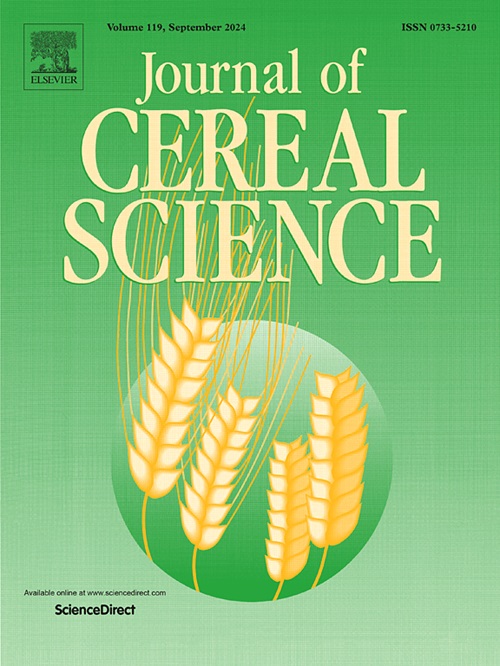Unraveling the relationship between large-magnitude extensibility of Lamian dough with gluten molecular interactions and subunit composition
IF 3.7
2区 农林科学
Q2 FOOD SCIENCE & TECHNOLOGY
引用次数: 0
Abstract
The relationship between large-magnitude dough extensibility with gluten molecular interactions and subunit compositions were studied. Dough extensibility, a critical property for Lamian making, was achieved by adding sodium metabisulfite (SMBS) and improved by decreasing the pH level (6.3), which was indicated by the decrease in tensile force and increase in tensile distance. However, the loss of dough extensibility was induced by the prolonged resting time, which was more pronounced for doughs at low SMBS addition (0.005 %) and high pH value (10.8 and 13.0). Changes in the intermolecular forces and gluten subunits were associated with the loss of dough extensibility, accompanied with a fragmented gluten network. As the resting time increased, doughs at low SMBS addition and high pH showed decreases in free sulfhydryl groups and sodium dodecyl sulphate-extractable protein (SDS-EP) and increases in disulfide bonds. Increasing ionic bonds at high alkaline pH also contributed to high tensile stress and low tensile strain. The extractability of gliadin and D-low-molecular-weight glutenin subunits decreased at high pH value. Optimal level of disulfide and hydrogen bonds along with an appropriate gluten subunit distribution would play a constructive role in improving the large-magnitude dough extensibility.

拉面大尺度延展性与面筋分子相互作用和亚基组成的关系
研究了面筋分子相互作用和亚基组成对大尺度面团延展性的影响。加入焦亚硫酸钠(SMBS)可获得拉面制面团的关键性能——延展性,降低pH值(6.3)可改善面团的延展性,表现为拉伸力降低,拉伸距离增加。发酵时间延长导致面团延伸性损失,在低SMBS添加量(0.005%)和高pH值(10.8和13.0)条件下,面团延伸性损失更为明显。分子间力和面筋亚基的变化与面团延展性的丧失有关,并伴有面筋网络的碎片化。随着静置时间的延长,在低SMBS添加量和高pH条件下,面团中游离巯基和十二烷基硫酸钠可提取蛋白(SDS-EP)减少,二硫键增加。在高碱性条件下,离子键的增加也导致了高拉伸应力和低拉伸应变。在高pH值下,麦胶蛋白和d -低分子量谷蛋白亚基的可提取性降低。最佳的二硫键和氢键水平以及适当的面筋亚基分布对提高面团的大尺度延伸性起着建设性的作用。
本文章由计算机程序翻译,如有差异,请以英文原文为准。
求助全文
约1分钟内获得全文
求助全文
来源期刊

Journal of Cereal Science
工程技术-食品科技
CiteScore
7.80
自引率
2.60%
发文量
163
审稿时长
38 days
期刊介绍:
The Journal of Cereal Science was established in 1983 to provide an International forum for the publication of original research papers of high standing covering all aspects of cereal science related to the functional and nutritional quality of cereal grains (true cereals - members of the Poaceae family and starchy pseudocereals - members of the Amaranthaceae, Chenopodiaceae and Polygonaceae families) and their products, in relation to the cereals used. The journal also publishes concise and critical review articles appraising the status and future directions of specific areas of cereal science and short communications that present news of important advances in research. The journal aims at topicality and at providing comprehensive coverage of progress in the field.
 求助内容:
求助内容: 应助结果提醒方式:
应助结果提醒方式:


